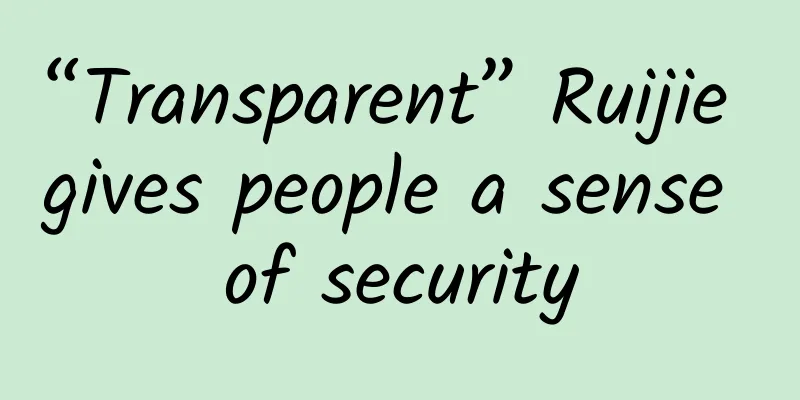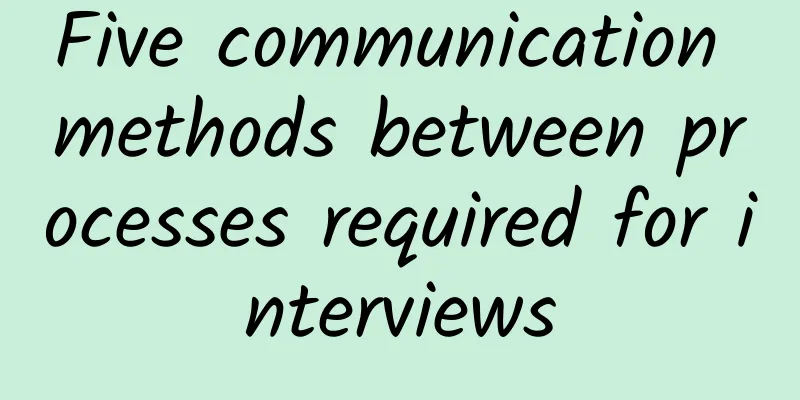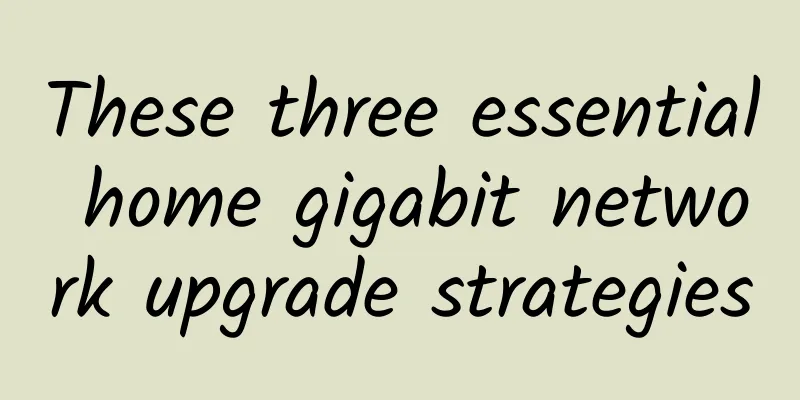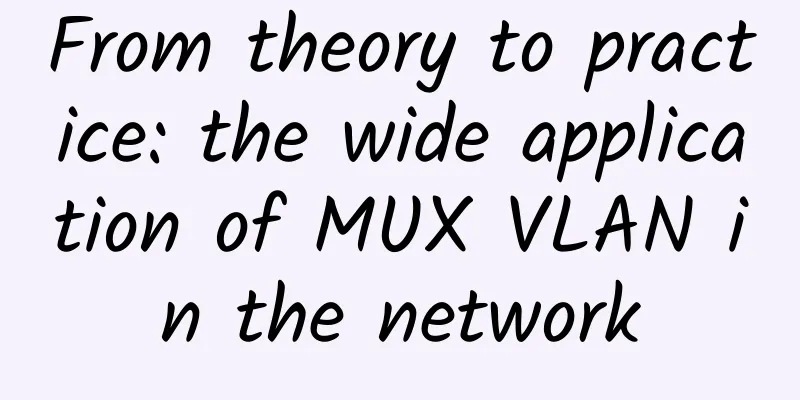“Transparent” Ruijie gives people a sense of security

|
This is a very "pure" partner conference, pure enough to only talk about cooperation concepts, cooperation models, and cooperation methods; it is also a very "transparent" meeting, transparent enough that no details will be deliberately blocked or concealed. Enterprise digital transformation has indeed become a trend, but before solving the digital pain points of users, the pain points in ecological cooperation must be addressed first; ecological cooperation has indeed become a trend, but before establishing ecological cooperation, the chronic diseases left over from the traditional channel era must be eliminated. Don’t play tricks on your partners Ruijie Networks has been established for 20 years. It has experienced the excitement of the Chinese ICT market, but also felt helpless about the "pain of cooperation" inherited from the excited market. Of course, Ruijie is now more willing to be an open, transparent company with a strong willingness to cooperate; it also promises to be a company that does not pursue "smartness" and does not "play tricks" with partners. The first National Co-construction Partner Conference. Ruijie abandoned the traditional channel cooperation model with the theme of "co-construction". The company's president Liu Zhongdong also took this as the direction and clarified the attitude towards ecological cooperation: Ruijie has no reason to guard against partners, but will attract partners with a more open attitude; Ruijie will not compete with partners, but support partners to expand the market with a more transparent process. ▲ Photo: Liu Zhongdong, President of Ruijie Networks Whose fault is it that the “tragedy of cooperation” What is "channel co-construction"? Briefly describe the origin of this model. In the traditional channel model, the so-called customers are yours and mine is mine. The key decision-makers of customers have been strictly isolated and protected; the so-called cooperation is full of games in every link, and the scope of cooperation has been compressed to a very small scope such as project delivery and operation and maintenance services; and the so-called reporting, channel dealers are worried about being snatched away, and ICT companies will not easily promise exclusive support. Even on the eve of bidding, channel dealers have to anxiously wait for a project authorization; and the so-called discounts and reserve prices require both parties to fight wits and courage and repeatedly "discuss". The above contradiction is the "pain of cooperation". Is it that the partners are too "smart" or the manufacturers are too "smart"? Perhaps neither. The root cause of the error can only be attributed to the traditional channel model. The seemingly classic system architecture and seemingly smooth business process cover up the insecure top-level design, which inevitably makes it difficult to establish a saturated trust cooperation. “Co-construction” is a model, not a policy Of course, from this "tragedy of cooperation", we can understand the origin of "channel co-construction". First of all, Ruijie defines it as a cooperation model, not a channel policy. In both the Name and Non-Name markets, Ruijie will adopt the "channel co-construction" model; for industry partners and business partners, Ruijie will also promote the "channel co-construction" model. In this model, Ruijie and its partners "divide the work but not the family". Partners fully grasp the initiative of market expansion in specific industries, specific regions, and specific scenarios, and Ruijie will guarantee the benefits generated by partners' market investment under any circumstances and form a joint team with partners. The joint team is based on complementary capabilities and the principle of information transparency, and each performs its duties to serve customers together. Not only do the tillers have their own land This is the basic definition of "channel co-construction". The first half of the definition can be understood as "those who till the land have their own land, and those who till the land have their own profits", but the second half can better reflect the essential meaning of "channel co-construction", that is, Ruijie and its partners establish face-to-face and back-to-back trust, and form a sense of security in cooperation without "playing tricks". In fact, the prototype of the "channel co-construction" model can be traced back to the "channel map" model or "channel short list" strategy based on regional and industry dimensions. However, the traditional model only solves the "land ownership" problem and does not deepen the solution of problems such as "transparency" of the cooperation process. Ruijie's "channel co-construction" model is not only about "those who till the land own the land", but also aims to break through the traditional project-based cooperation relationship between upstream and downstream and establish a highly sticky ecological synergy. Taking the Chinese ICT market as an example, first-tier companies usually gather more than 10,000 channel vendors, but no more than 1,000 core partners. This is the drawback of project-based cooperation that leads to mutual suspicion, and the "channel co-construction" model is precisely aimed at solving this problem. In the "channel co-construction" model, partners will participate in the entire process and control all details of the project progress through the "three rights in one", namely market ownership, project decision-making rights, and investment return rights, and play their value at every link. They can also coordinate manufacturer resources at any time at every link. First, "land ownership" is clearly defined as a partner contracting system, which will be further refined. For example, a smart campus can be further refined into application scenarios such as digital libraries, wireless campuses, and smart classrooms. Based on different application scenarios, Ruijie may cooperate with partners in "co-construction". At the same time, in the aspects of solution design and project quotation, partners will also give full play to their "project decision-making power" and obtain "investment income rights" for this value. How to build trust and security? To further expand on this topic, the framework of the "channel co-construction" model is roughly like this, but how to establish trust and security is the core. In fact, since the first day that many domestic channel dealers enter the ICT market, their "masters" will teach them by words and deeds, and they must always grasp the control and control their own destiny. However, this thinking seems to be stable, but in fact it is full of suspicion; it seems to be safe, but in fact it increases the internal friction of the project. "Cooperation and co-construction is a process of mutual efforts to achieve goals based on trust. This also requires both parties to adopt an open attitude, each giving up a small part of their sense of security and leaving it to the partner to guarantee." The sense of security that Song Jizhou, general manager of Ruijie Network Channel Business Unit, mentioned is not only that those who eat the salary do not compete with the people for profit, but also an attitude of not abandoning or giving up. ▲ Photo: Song Jizhou, General Manager of Ruijie Networks Channel Department Judging Ruijie's attitude by this standard? First, Ruijie contributes to and shares the markets where it has the most advantages, such as higher education, general education, finance, and government. At the same time, Ruijie communicates every detail with channel partners in a transparent manner, and maintains information symmetry with partners in every technical exchange and every quotation. Whether a project wins or loses, advances or retreats, both parties will make decisions together and bear responsibilities together. In this regard, Song Jizhou said: "Manufacturers hand over the risk of operating customers to channels, and channels also hand over the risk of value delivery to manufacturers. Both parties are responsible for the combination, tolerate behaviors that do not affect long-term cooperation, and do not deny the possibility of continued cooperation because of the other party's mistakes in a project or a customer." “Channel Co-construction” is the “Rome Plan” The above is Ruijie's "channel co-construction" model. Since the model was proposed in April 2019, Ruijie has signed a memorandum of understanding on co-construction of customers with nearly 10,000 core partners. In the next 3 to 5 years, Ruijie will also work with co-construction partners to build a customer map and achieve the co-construction of more than 100,000 customers and millions of application scenarios. Finally, the "channel co-construction" model is also known as the "Rome Plan" within Ruijie, which means "Rome was not built in a day." This model will be implemented for a long time, guaranteeing partners' market ownership, project decision-making power, and investment income rights, and ensuring that partners can obtain reasonable returns on their market investment. |
<<: Useful information: When does DNS use the TCP protocol and when does it use the UDP protocol?
Recommend
How O-band technology can help overcome implementation barriers from 5G to 6G
The 5G communications protocol was developed in 2...
Cloud dedicated line and customer access technology networking solutions
Labs Guide As cloud-network integration becomes i...
PM Experience Talks About the 5 Essential Features of Project Management Tools
【51CTO.com Quick Translation】 Project management ...
In the new era, how can operators seize the opportunity of industrial Internet?
2020 is the year when 5G enters large-scale appli...
Goodbye 2G, hello 5G
[[403376]] This article is reprinted from the WeC...
What should you know about 5G technology? What will happen in the future?
The most memorable coverage of 5G cellular networ...
New breakthrough in 5G technology: The cost of millimeter wave equipment has been greatly reduced, and antennas can be directly "printed"
Researchers at Georgia Institute of Technology, N...
The three major operators will cancel the unlimited data packages in disguise from September 1st. Netizens shouted: I am not willing to accept it
Recently, the Ministry of Industry and Informatio...
The national 5G construction target for 2020 was completed ahead of schedule. These places are exemplary
According to the statistics of the Ministry of In...
Say goodbye to being trapped by walls: three magic tools to make your home WiFi full of
"What's going on! The Internet speed is ...
The three major operators delisted from the US and returned to the A-share market
Recently, China Mobile issued an announcement sta...
Building the future: How ICT can help develop livable cities
With the steady acceleration of global urbanizati...
5G applications are gaining attention, adding new impetus to smart education!
Education is a national priority. my country has ...
In-depth | Only IT people can understand "Journey to the West"
As a TV series that has been rebroadcast thousand...
List of the most common Internet SIM cards: Choose the right one and save a lot of money
At present, many Internet companies have joined h...









